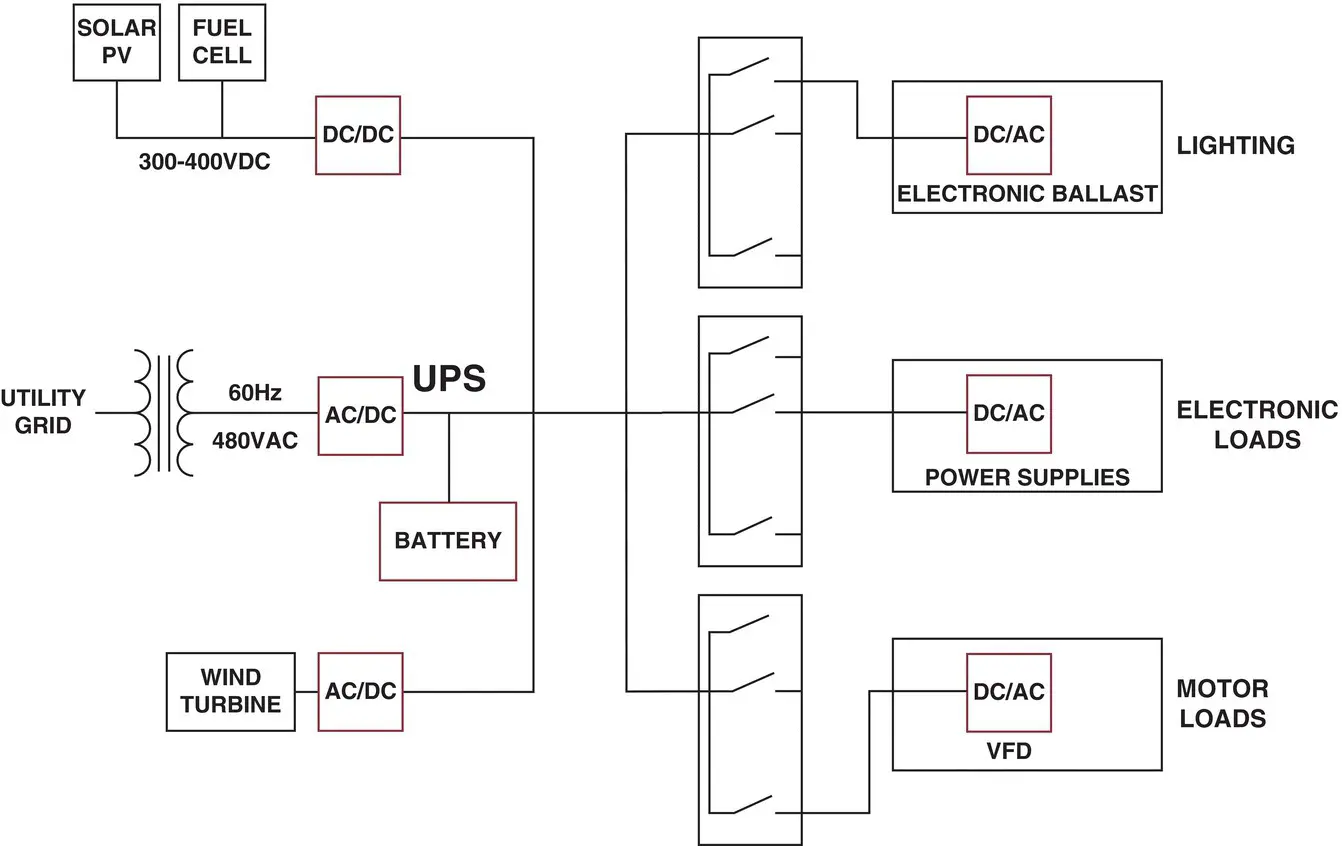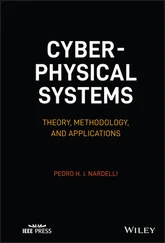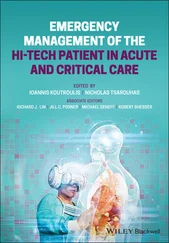As discussed, state‐of‐the‐art protective devices can make a significant contribution to protective device coordination, minimizing or eliminating unnecessary outages due to compromised coordination. If project requirements demand strict coordination, electrical equipment selection may be affected. It is, therefore, important to consider how these requirements affect equipment selection, specification, and layout as early in the project as possible. The selection of the wrong type of equipment may negate the ability to take advantage of the technological advances discussed above.
3.11 Introduction to Direct Current in the Data Center
Years ago, the Direct Current Data Center gained significant interest due to its ability to operate more efficiently, although today, it is still relevant, it has not been scaled as we thought it would. That being said, all of our modern electronic equipment today relies on solid‐state semi‐conductor technology, which will only operate on direct current, or DC. According to the Green Buildings Forum, 72% of the energy used in the U.S. is consumed in commercial real estate buildings. A study by the University of Virginia shows that 80% of this energy is used by semi‐conductor technology, which means this much AC power must be converted to DC. The 2007 EPA “Report to Congress on Server and Data Center Energy Efficiency” shows that data centers in the United States have the potential to save up to $4 billion in annual electricity costs through more energy‐efficient equipment and operations. One movement to accomplish this that is currently gaining acceptance among data center designers, and garnering support from the Electric Power Research Institute (EPRI), is the use of a direct current distribution system.
When we step back and look at the end‐to‐end power distribution in a conventional data center, we see several power conversions taking place. Incoming AC utility power is first rectified to DC at the UPS for the purpose of connecting to DC battery storage. It is then inverted back to AC for distribution to the server racks. At the racks, the AC is then rectified back to DC again in the power supplies for each server. We ask ourselves ‐ are all these back‐and‐forth conversions really necessary? The answer is “No.”
3.11.1 Advantages of DC Distribution
Suppose we made only one conversion of the incoming AC to DC at the UPS, and then distributed the DC throughout the facility without any further conversions, thereby eliminating two power conversions along with the attendant losses. Not only would this make for a more efficient system, it would also reduce the number of components, thereby eliminating points of failure, making for a more reliable system. As an example, a 380VDC distribution system will result in a 200% increase in reliability, a 33% reduction in required floor space and a 28% improvement in efficiency over conventional UPS Systems, or a 9% improvement over ‘best in class’ AC UPS architectures. A DC distribution system would also facilitate the integration of on‐site DC‐generating power sources, such as solar PV arrays, wind power, and fuel cells, which all can provide DC power without a single power conversion. For example, the best published efficiency for a fuel cell is 50%. According to UTC Power, by eliminating the AC power conditioning subassembly and utilizing waste heat in a combined cooling, heating, and power application, efficiencies can exceed 85% with a high load factor.
Figure 3.4below shows the various power conversions that are required in a conventional AC distribution system, along with those that are required to connect alternate energy sources.

Figure 3.4 Traditional AC Distribution
Figure 3.5below shows the fewer conversions that are required with a DC distribution system and the simpler integration of alternate energy sources.

Figure 3.5 DC Distribution
This kind of DC distribution system can provide up to a 25% decrease in energy usage when compared to a traditional AC power distribution system by eliminating the losses associated with the inefficiencies of power conversion equipment. It also reduces the initial cost for electrical distribution equipment by about half. And since there are fewer conversions from AC to DC and DC to AC, which translates into less equipment, the distribution system occupies significantly less space. Proponents of DC power in data centers tout fewer single points of failure in DC systems due to the reduction in components. There is also the accompanying decrease in heat production. This reduces cooling capacity requirements and provides further reductions in operating costs.
Besides all of the electronic equipment that is found in the data center, another significant consumer of electricity is the lighting system. Fluorescent lighting was the defacto standard for many, many years, and is typically fed with 277VAC in larger commercial buildings or data centers. Since fluorescent lamps vary by type and length, they operate on varying voltages and currents. A fluorescent ballast is used to adjust the supplied voltage and regulate current accordingly. In an effort to improve fluorescent lighting efficiency, the electronic ballast was invented in the 1970s. Besides adjusting the supplied voltage, electronic ballasts also changed the frequency from 60 Hz to 20,000 Hz or higher, which substantially eliminates flicker while also providing higher system efficiency.
LED lighting retrofits are available to replace fluorescent bulbs in existing fixtures, or the fixtures can be modified to bypass the ballasts. The LED bulb emits the same amount of lumens and can be produced to match any temperature (color) level. It is taking over the lighting industry in today’s environment to conserve energy since it is a simple alternative. It uses a fraction of the power fluorescents require and also gives off a fraction of the heat, which relieves some stress on the HVAC system.
Almost all new lighting installations are LEDs other than specialty lighting for stages or displays. In fact, most municipalities around the country have adopted LED lights or retrofits for all of their street and roadway lighting. Another benefit is fewer circuits are required since the load per light is a fraction of an amp. LED lights have also brought about better controls or wireless controls. The fixture can have an IP address associated with a wireless wall switch or ceiling occupancy sensor to operate a single or battery of fixtures
By supplying the lighting system with DC, we eliminate another power conversion and improve data center efficiency even further.

Figure 3.6Electronic Ballast
(Courtesy of Antron Electronics Co., Ltd)
3.11.3 DC Storage Options
The fact that electrical energy is most easily stored in batteries as DC is the primary reason power conversions is necessary when AC distribution is used in the data center. The two types of batteries that are most commonly used in conjunction with a UPS are lead‐acid wet cell (flooded) and valve regulated lead‐acid (VRLA) or variations thereof. Lithium ion batteries are gaining popularity since they have excellent weight to power density, can cycle or discharge many times without losing capacity, do not off gas during charging, and have a longer life than VRLA’s. They are mainly being deployed on smaller UPS’s below 300kW, and some state or local city codes have special requirements or are hesitant to allow them to be installed in buildings since they are a newer and thought of as unproven. This will change over time as more and more installations become common. For additional information, see Chapter 10– UPS.
Читать дальше















